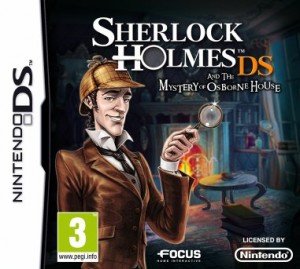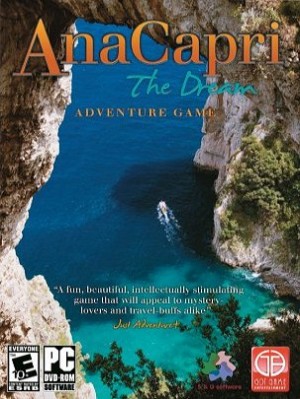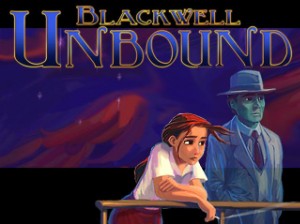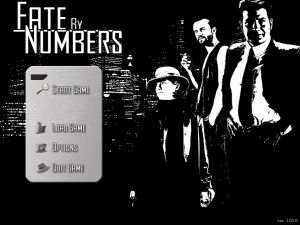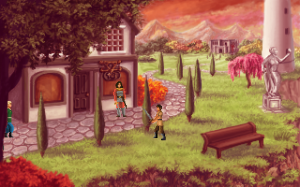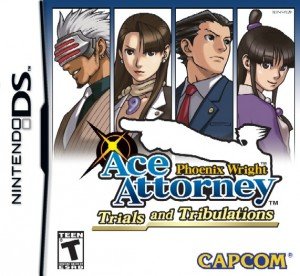Review for Sherlock Holmes and the Mystery of Osborne House

When it comes to Sherlock Holmes in adventure games, the great detective has been in his fair share of escapades already, many of them developed by Frogwares and released on PC. His first outing exclusive to the Nintendo DS, Sherlock Holmes and the Mystery of Osborne House, is quite a bit different from its computer counterparts, opting for more of a Professor Layton style of detecting than his usual approach. That isn’t a bad thing in its own right, but while the game looks nice and has some promising puzzle-solving potential, the quality of both the storyline and gameplay provided makes the overall experience feel distinctly average.
It's a slow crime-solving period for Holmes, who is at home on Baker Street with Watson, feeling impatient with the mundaneness of life. But when he receives an invitation from the eccentric Lord Brainstorming to look at his new inventions, Holmes’s curiosity is piqued. After a brief tutorial and a few primer puzzles at the Lord’s manor, Sherlock receives a mysterious game board that includes a letter from the Prime Minister mentioning a break-in at Windsor Castle. As Holmes begins travelling from location to location searching for evidence, he eventually discovers a sinister plot to overthrow the Royal Family, and the game is really afoot. This premise is suitably intriguing, but the storyline remains flimsy, with Holmes often deciding he needs to visit the next location based solely on a small piece of evidence. The titular Osborne House doesn't even make an appearance until right near the end of the adventure (with very little mystery involved), and a bomb plot threatening Queen Victoria never feels particularly tense.
Of the numerous people you encounter, including disgruntled landlords, ex-cons, police officers, guards and various members of royalty, few have much to say of any importance and most lack enough personality to make them memorable. Holmes and Watson play a far more important role, obviously, and it's through their constant banter that most the plot is revealed, with Sherlock being true to his super-intelligent, sometimes-hard-to-follow self, and Watson commenting on what just happened from his own point of view or asking his friend for his opinion on the state of affairs. Their conversations are interesting to read, although sometimes they’re often quite short and offer very little depth. None of the characters are voiced, as all dialogue is expressed through text, most of which is brief and to the point.
There aren't many animations to speak of either. All conversations display a still portrait of the character over the current background, which are certainly functional but lack in emotion as a result. That aside, the models are suitably detailed in a whimsical, almost caricatured way, and the scenery is nicely drawn, with a stylised, cartoon-like veneer. Holmes and Watson explore a variety of places, from run-down sleeping accommodations to docks, castle interiors and underground caves. Curiously, very little attention has been paid to the soundtrack, with the same few pieces played on a continuous loop which become irritating very quickly. Sound effects are basic and often overwhelmed by this repetitive background music. More effort spent on this aspect of the game could easily have added more intrigue and tension to the plot, or at least offered some much-needed variety.
The entire adventure is played using the stylus on the touch screen. All dialogue and puzzles can be interacted with on the bottom screen, while information about the story and setting is displayed on the top. Moving between rooms is accomplished simply by touching directional arrows on the left and right sides, and navigating between major locations is carried out through a map. The map displays all possible destinations you can visit, but its use is restricted, as you'll be forbidden to venture too far afield before solving the puzzle at hand, making the overall game a linear experience. Tapping any relevant objects automatically transfers the item into the inventory or opens up a puzzle. Some non-essential hotspots yield basic commentary, but otherwise the game’s interactivity is very limited. The inventory icon not only leads to items you’ve collected, but also any important documents you’ve discovered. You can also read back through previous dialogues, check on your puzzle progress, or save the game at any time from there as well.
The game’s inventory puzzles tend to be the most enjoyable, as they feel organic to your investigation. Often you will find items to collect, which must then be applied in the appropriate place in the environment once all conditions are met. One puzzle involves using a cannon to blow a hole in a wall, but a rope and source of fire are needed from other locations to fulfil your objective. Active inventory items must be manually selected for use, and some must be combined with others first. The difficulty here is the inability to distinguish usable items from those that are simply for decoration. Hotspots aren’t highlighted in any way by default, and although there is an icon that reveals all interactive objects on screen, it would have been nice if you could more intuitively find them on your own. There is a small amount of exploration involved in acquiring these items, but as you are quite restricted in the areas you can access at any given time, the balance of gameplay is definitely slanted towards the puzzles.
Along with the inventory obstacles, there are 39 standalone challenges to solve in the main adventure. They are mostly logical to work out, but none are particularly inspiring or inventive, being more serviceable than fun and engaging. Some are well integrated, such as a puzzle to repair a net or untangle the knots in a length of rope, but many feel forced and out of place, like catching a dog by playing a boardgame or solving the various overly-contrived locking mechanisms. All puzzles are presented in a close-up view, and many are quite predictable in nature, from rotating pipes to completing circuits, assembling jigsaw pieces, and making your way to the end of a maze. Though you’ll input solutions with the stylus, there is a distinct lack of activities that make much use of the touch screen, such as drawing or writing things down. There aren't any timed sequences or other ways to meet your demise, so you are always free to ponder solutions without any external pressure. In one nice touch, you'll face quizzes after certain events in a style that suits a Sherlock Holmes mystery. A series of statements is presented and only three are linked together in some way, which have to be identified. You are not penalised for getting the answers wrong (which is handy, as you may sometimes have to guess at the correct solution), and it's a useful way of emphasising important information about the case.
Each puzzle is presented without any instructions about the objective, which is something of a double-edged sword. While it means you’re given the chance to piece the solution together completely from scratch, it does make some of the puzzles a little too obscure without enough information to know what you are supposed to be doing. This is where the hint system comes in handy, as each puzzle provides both a partial hint and full help expounding on the original hint more specifically. Surprisingly, although the partial hint system is useful for pointing you in the right direction with general information about the puzzle, full help doesn't do much at all, often being vague and inconclusive. Each puzzle has a score rating depending on its difficulty (the more points, the harder it is to solve) and these points are depleted by using hints. There is an opportunity to unlock four minigames by completing the adventure with a certain point score, but these aren't very exciting. For example, one puzzle involves moving knights on a chess board with limited moves and another challenges you to colour a map using three colours without allowing them to overlap.
Despite the variety of puzzles offered, it doesn't take long to plough through them all, providing only about 5-7 hours of game time even if you get stuck on a few. Much like the rest of the storyline, the game ends weakly with very little drama and feels completely rushed, making it something of an anti-climax. All in all, it's hard not to feel a bit disappointed with the The Mystery of Osborne House, particularly when you consider how Frogwares have been so instrumental in bringing Sherlock Holmes to life in previous adventures. It certainly looks nice, and its bite-sized, puzzle-based gameplay is nicely suited to its handheld platform, but the storyline is thin and the puzzles never elevate themselves beyond the status of predictably average. Coupled with its limited hint system and brief length, even the most dedicated fan of the great detective is likely to be left feeling underwhelmed. It’s certainly not a bad game, just a decidedly mediocre one, so unless you’re in the mood for a fairly lightweight puzzle-adventure, a purchase is not so elementary this time.
Astrid Beulink contributed to this article.


